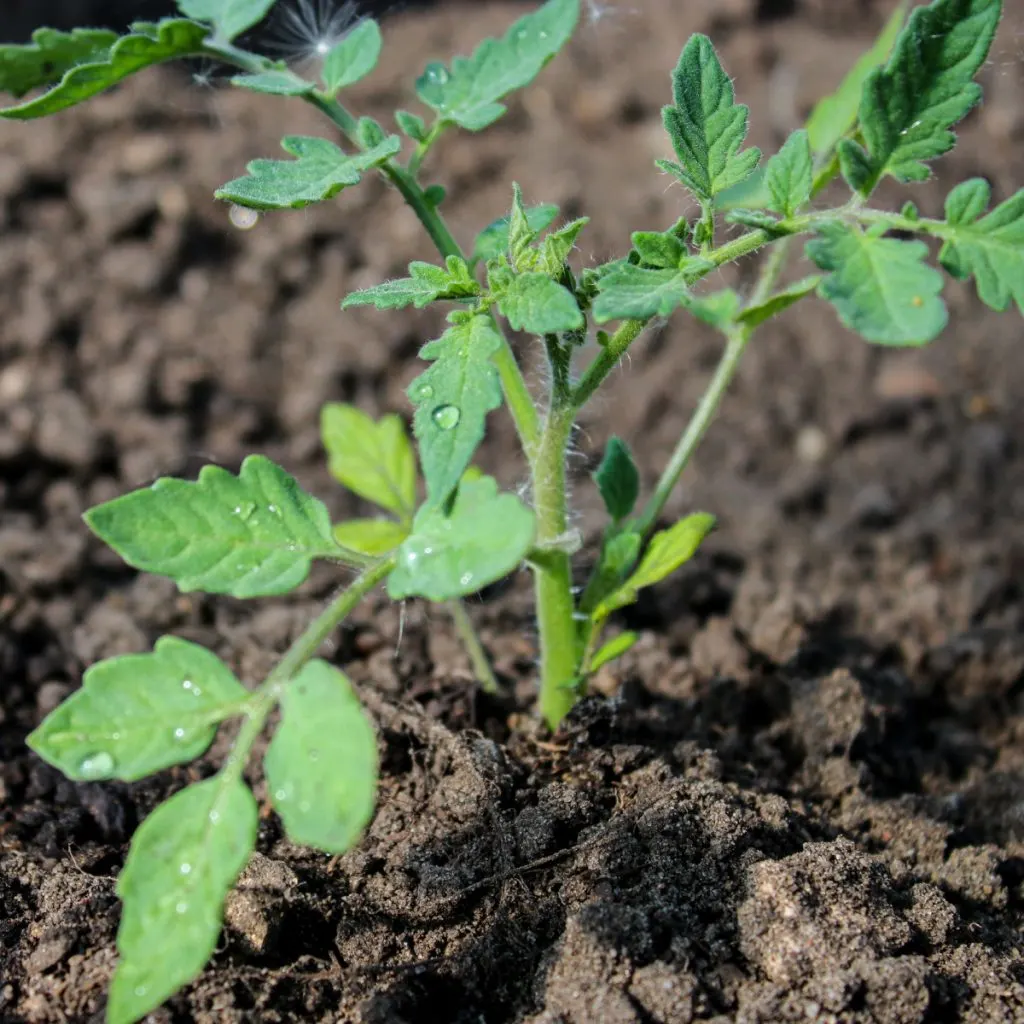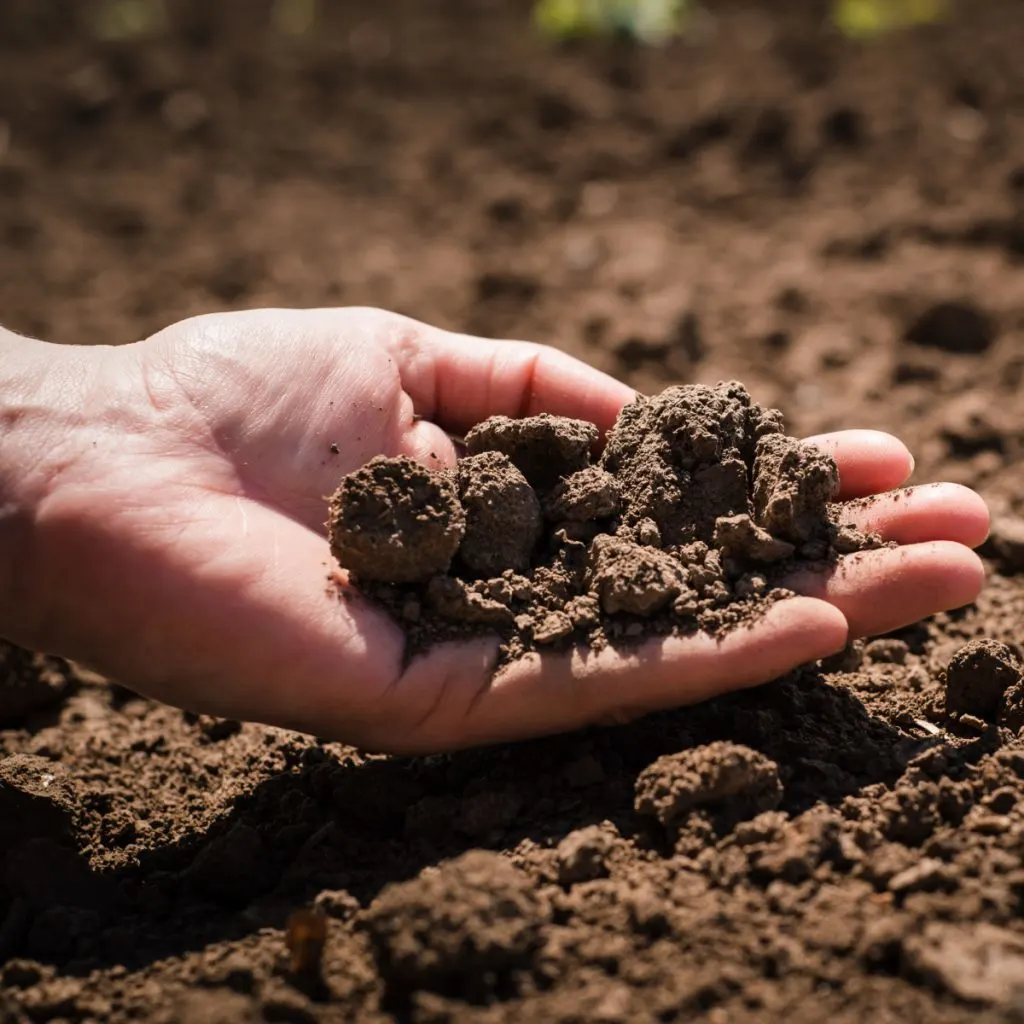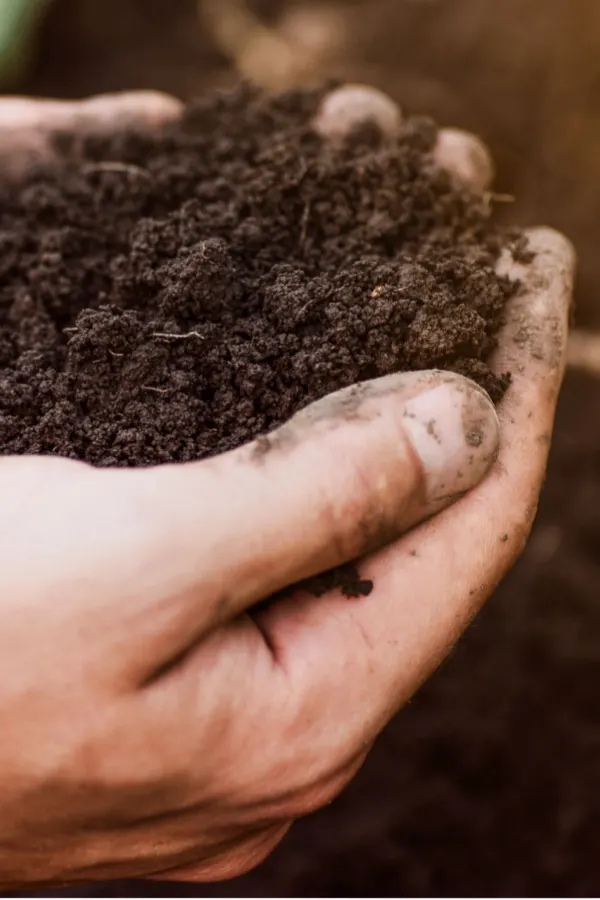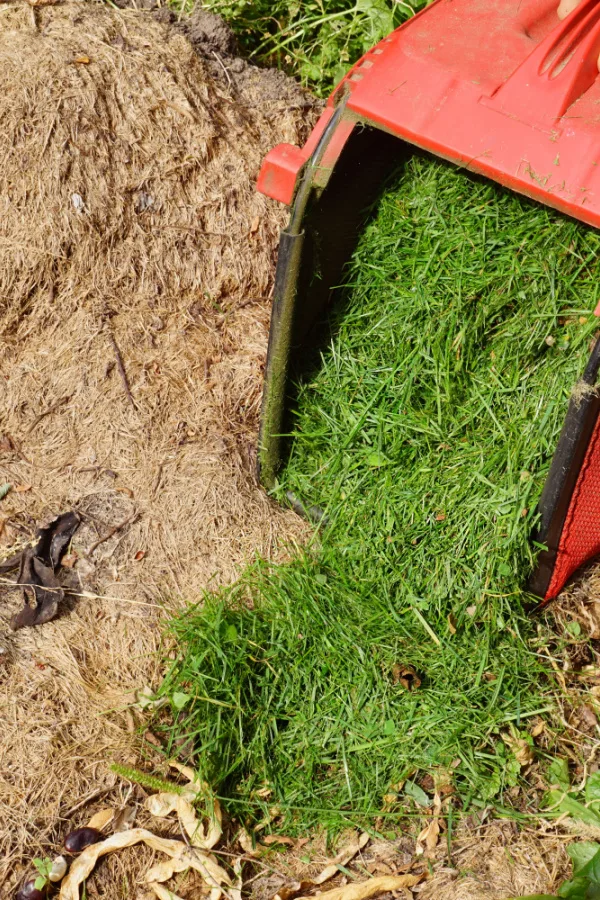Wondering how to re-energize, recharge and power up the tired, lifeless soil where your tomatoes grew last year – before you plant again this year?
Tomato plants are notorious for depleting nutrients from the soil due to their high feeding needs. In fact, so much so, that if at all possible, it’s best to never grow them in the same spot for several years.
This practice gives the soil time to recover and regain its nutrients. It also helps reduce the risk of blight and other disease that can affect future tomato crops. However, for gardeners with limited space or those using raised beds, rotating tomato plants to a new location each year can be challenging – or even impossible.

So what can you do? In such cases, revitalizing the soil before the next planting season is essential. And even if you won’t be growing tomatoes in the same area the following year, it’s still important to power it back.
Why? Because if you don’t, with all of the nutrients the tomatoes took from the soil the previous season, it’s likely there won’t be enough nutrients left to support the healthy growth of anything you plant in the space this year!
The Toll Tomato Plants Take On Your Soil
Tomato plants are very heavy feeders from the soil all throughout their growing cycle. From small transplants – all the way to mature, heavily producing plants.
For starters, tomatoes require and use large amounts of the “Big 3” of plant nutrients – nitrogen, phosphorus, and potassium. Nitrogen is critical for tomatoes for growth and development. It’s needed for strong root and branch development – and for healthy leaf growth to power photosynthesis.
Tomato plants need phosphorus to help with root development and flowering. And potassium? It’s critical for strong fruit production and overall plant health. But there is another nutrient that tomato plants need and use a lot of – and that’s calcium.
Without enough calcium, tomato plants (and other plants as well) can suffer from blossom end rot – putting a big dent in your potential harvest. See: How To Prevent Blossom End Rot – 2 Simple Secrets To Keep Your Tomatoes Safe!

Tomato plants also absorb and use trace amounts of magnesium, sulfur, iron and zinc. All of which play important roles in the growth and production of all vegetable plants as well. But it doesn’t end there.
In addition to depleting soil of vital nutrients, after a full growing season, the soil where tomatoes grew can be left weak, crumbly – and void of any structure. And soil without structure has trouble holding moisture and nutrients. But even more importantly, sustaining any plant life at all!
How To Re-Energize The Soil Where Your Tomatoes Grew Last Year
So how can you give your soil back the nutrients it needs? Unfortunately, it’s not as easy as dumping in fertilizer. Fertilizer does nothing to help build soil structure. Or it’s ability to hold moisture or nutrients.
The real key to re-energizing the soil is to replenish both the nutrients and structure. And as it turns out, it’s not overly difficult to do. In fact, it’s actually fairly easy to do by simply adding in a few key power inducing ingredients to your soil before you plant. And here might be the best news of all – many of them can be found for free!
5 Simple Ingredients You Can Add To Re-Energize The Soil Where Tomatoes Grew
If you have a large garden setting, it can be tough to add in soil amendments to all of the space. So when recharging specific areas, try to put the ingredients close to where last year’s plants grew. If you grow in rows, this can be a relatively easy task to help conserve soil amendments.

If you do grow a large garden space – one thing that can really help is to plant a cover crop each and every fall. It covers the entire garden, and can help recharge large soil spaces. But beyond that cover crop, here’s what to use now to get that soil ready to grow this year!
Compost – How To Re-Energize The Soil Where Your Tomatoes Grew Last Year
The single most important ingredient you can add to tired soil is compost. Compost truly is the perfect soil amendment. Not only is it teeming with nutrients, it also is full of humus and structure.
Even more, it has active organisms and helpful bacteria that helps old soil come alive. It’s hard to ever use too much compost, but at minimum, mixing in a few shovels full of compost to each old planting hole area is a good start.
Of course, when you do put your plants in, adding even more directly into the new planting hole is a must as well! Affiliate Link: R&M Organics Premium Organic Compost
Wood Ashes – How To Re-Energize The Soil Where Your Tomatoes Grew Last Year
The wood ashes from your fireplace or fire pit are not only free – but great for recharging the soil where your tomatoes grew last year.
Wood ashes contain a large amount (20%) of calcium. They also happen to contain a fair amount of potassium as well. But beyond the nutrients, ashes also help to build soil structure – and can really make a difference in soil being able to absorb water.

So how much wood ash is enough? Mixing in one to two cups around where each tomato plant grew is a good rule of thumb. And when you plant tomatoes this year, mix 1/4 cup of ashes right into the planting hole too!
One final note on wood ashes – like nearly everything, too many can be a bad thing. Ash in excessive amounts can actually change the pH of a soil. Because of that, sticking with the above ratios is the best course of action.
Ground Egg Shells & Coffee Grounds – How To Re-Energize The Soil Where Your Tomatoes Grew Last Year
Ground egg shells are another incredible way to re-energize the soil where your tomatoes grew last year. Egg shells are full of calcium and other trace minerals and nutrients.
But to get the benefit of egg shells fast, you need to grind them fine. Partial egg shell pieces can take over a year to break down. But to power soil up fast, grind the shells into powder. It’s actually easy to do with an electric coffee grinder. Affiliate Link: Hamilton Beach Fresh Grind Electric Coffee Grinder
Coffee grounds are full of nitrogen and other trace nutrients. Because they are already ground down, they absorb into the soil quickly. Beyond their nutrients, they also help soil to absorb and hold moisture. See our article: Why You Need To Plant Tomatoes With Coffee Grounds – How To Get Tomatoes Growing Fast!
So how many coffee grounds should you use? Although you can spread them all over your garden soil, aim to put one to two cups of grounds near every old planting hole. And don’t be afraid to bury the coffee filter there too. It actually will break down fast – and add humus as it does.

Grass Clippings – How To Re-Energize The Soil Where Your Tomatoes Grew Last Year
Last but not least, don’t forget to add grass clippings! Grass clippings, especially green clippings, are full of nitrogen. They also have a lot of other trace minerals and nutrients as well. But as clippings break down, they also add a tremendous amount of humus, organic matter and structure to the soil.
To use, simply spread an inch or so of clippings on top of the soil and work it in to the first few inches. Clippings are also great in season to use as a mulch around your plants. As they break down, they soak nutrients and add more structure to the soil.
One note on grass clippings, if you use a weed and feed product on your lawn – avoid the clippings. The residue can actually get into your garden soil and affect your crops.
Here is to taking the time to re-energize your soil before you plant – especially when it comes to where your tomatoes grew last year!
Simple Garden Life
Follow Our Facebook Page For Even More Great Tips! Simple Garden Life Facebook Page
Simple Garden Life is a website dedicated to keeping gardening fun, simple and enjoyable! We publish two new articles each week along with a new garden podcast episode every two weeks. This article may contain affiliate links.
